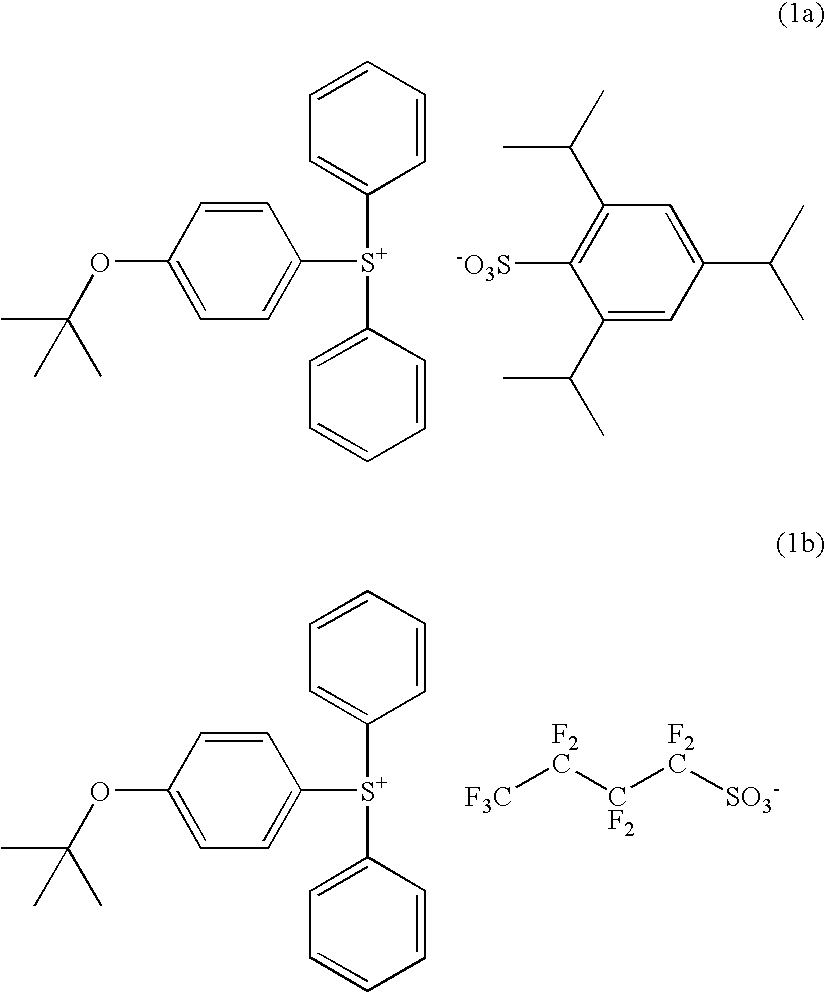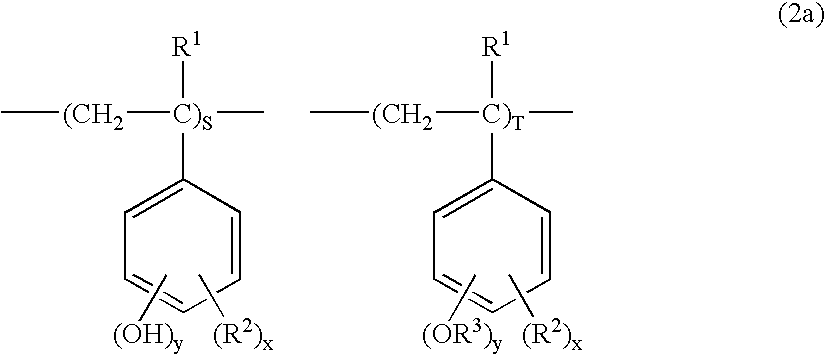Chemically amplified positive resist composition and patterning process
a technology of composition and positive resist, applied in the direction of auxillary/base layers of photosensitive materials, instruments, photosensitive materials, etc., can solve the problems of low resolution and variation in pattern feature size within the wafer plane, and achieve the effects of suppressing the diffusion rate, poor stability, and better resolution
- Summary
- Abstract
- Description
- Claims
- Application Information
AI Technical Summary
Benefits of technology
Problems solved by technology
Method used
Image
Examples
synthesis example 1
Synthesis of 2,4,6-triisopropylbenzenesulfonic acid
[0126] To 30.2 g (0.1 mol) of commercially available 2,4,6-triisopropylbenzenesulfonyl chloride were added 30 g of dimethyl sulfoxide and 30 g of water. Using an oil bath, the mixture was heated and stirred at 80° C. for 3 hours. The dimethyl sulfoxide-water solution was ready for use in the subsequent step of anion exchange reaction.
synthesis example 2
Synthesis of 4-(tert-butoxyphenyl)diphenylsulfonium 2,4,6-triisopropylbenzenesulfonate
[0127] In 100 g of dichloromethane were dissolved 20.2 g (0.1 mol) of diphenyl sulfoxide and 32.6 g (0.3 mol) of trimethylsilyl chloride. To this reaction solution which was ice cooled, 1.0 g (0.01 mol) of triethylamine was added, and a tetrahydrofuran solution of 4-tert-butoxyphenyl magnesium chloride (0.3 mol) which had been prepared by a customary technique was then added dropwise at a temperature below 20° C. Thereafter, an aqueous solution of ammonium chloride was added at a temperature below 20° C., and 100 g of diethyl ether was further added.
[0128] To the aqueous layer separated, the dimethyl sulfoxide-water solution of 2,4,6-triisopropylbenzenesulfonic acid, prepared in Synthesis Example 1, and 300 g of dichloromethane were added, followed by stirring.
[0129] The organic layer was separated therefrom, washed three times with 200 g of water, and concentrated. To the concentrate, diethyl e...
synthesis example 3
Synthesis of 4-(tert-butoxyphenyl)diphenylsulfonium nonafluoro-1-butanesulfonate
[0132] The procedure of Synthesis Example 2 was repeated except that potassium nonafluoro-1-butanesulfonate was used instead of the aqueous solution of 2,4,6-triisopropylbenzenesulfonic acid. The target compound was obtained as white crystals in a yield of 72%.
PUM
| Property | Measurement | Unit |
|---|---|---|
| Force | aaaaa | aaaaa |
| Magnetic field | aaaaa | aaaaa |
| Nanoscale particle size | aaaaa | aaaaa |
Abstract
Description
Claims
Application Information
 Login to View More
Login to View More - R&D
- Intellectual Property
- Life Sciences
- Materials
- Tech Scout
- Unparalleled Data Quality
- Higher Quality Content
- 60% Fewer Hallucinations
Browse by: Latest US Patents, China's latest patents, Technical Efficacy Thesaurus, Application Domain, Technology Topic, Popular Technical Reports.
© 2025 PatSnap. All rights reserved.Legal|Privacy policy|Modern Slavery Act Transparency Statement|Sitemap|About US| Contact US: help@patsnap.com



